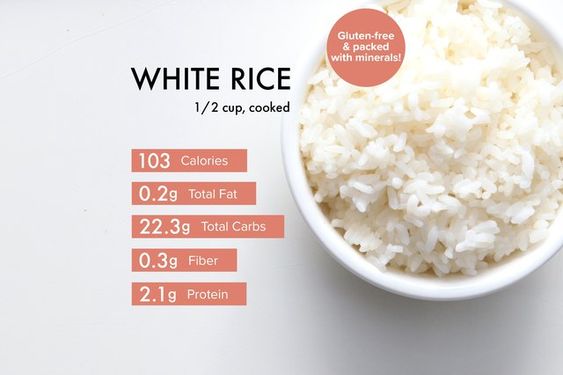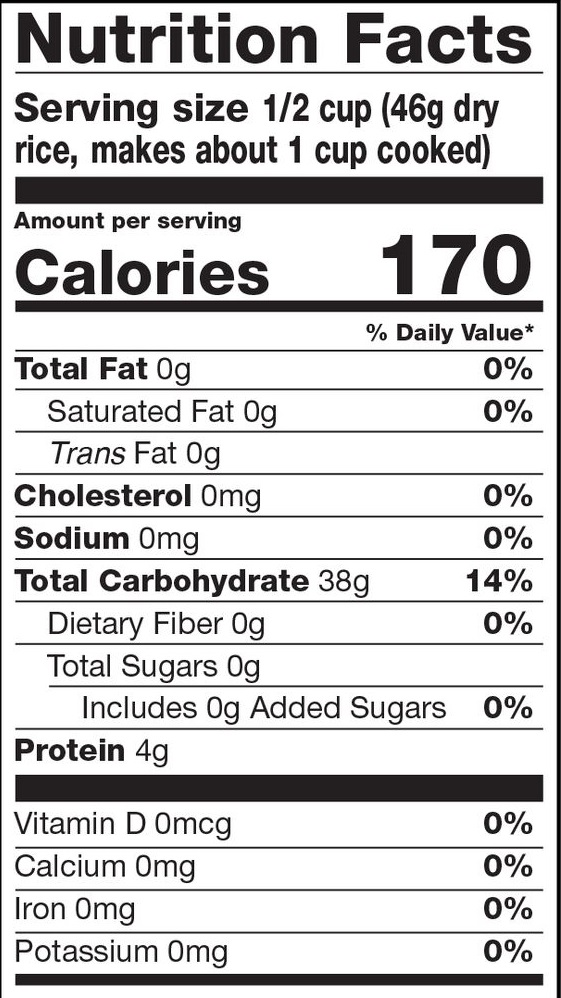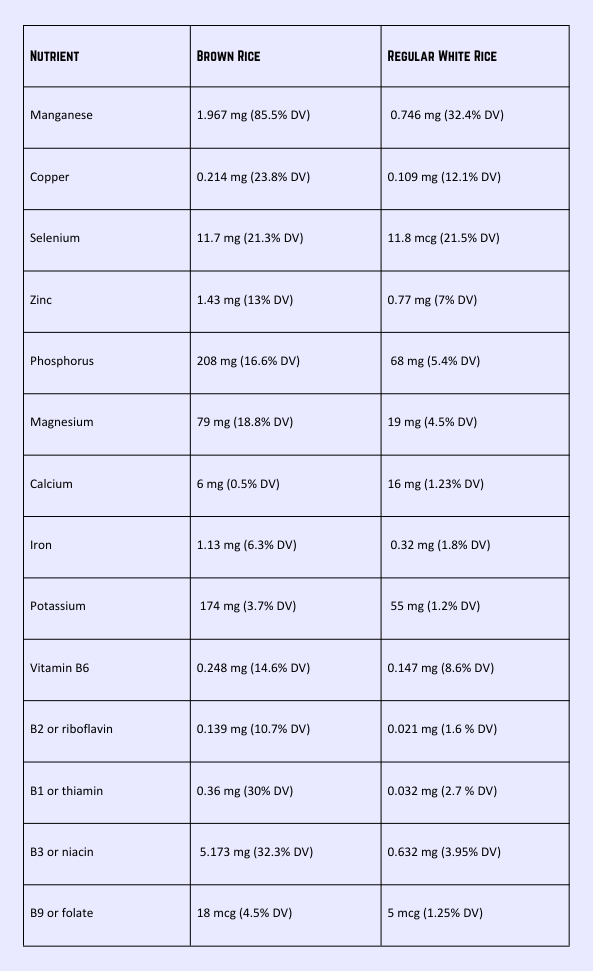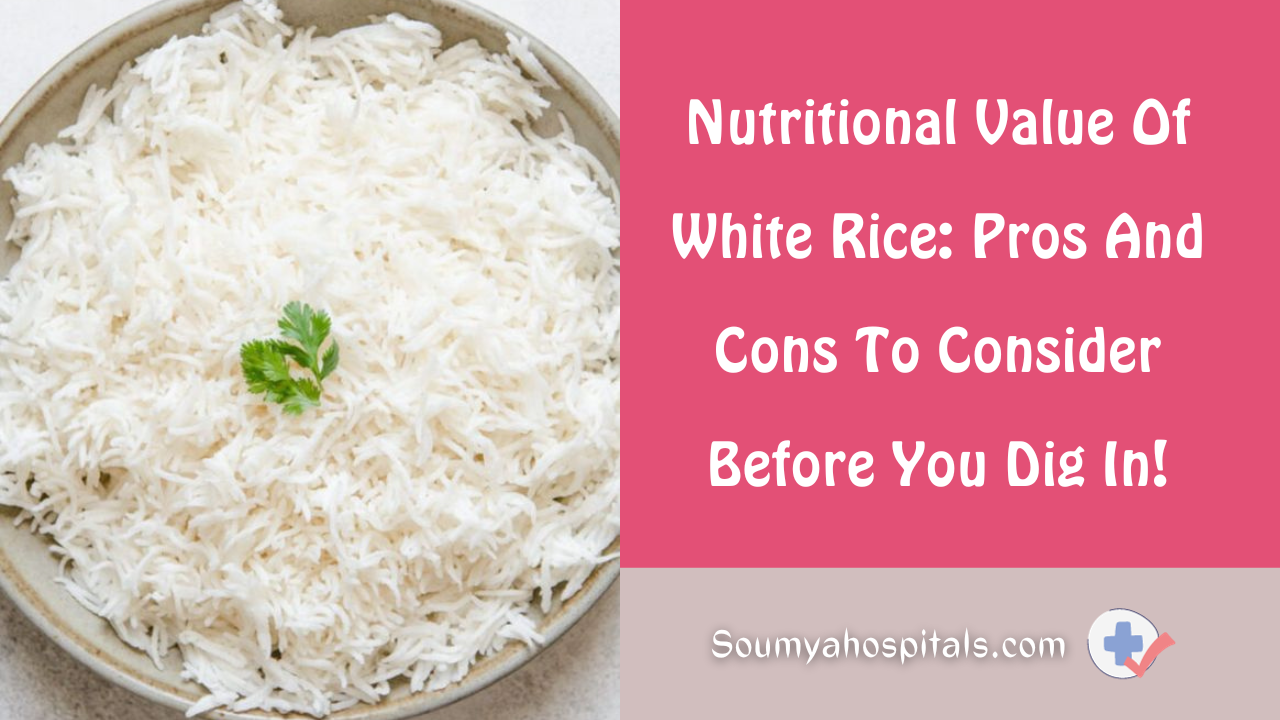Whether it’s a heaping serving of fragrant white basmati rice with an Indian curry, a delicious Middle Eastern pilaf, or a perfectly made plate of saffron-scented Milanese risotto, a well-made rice dish is hard to resist! This versatile grain is easy to make and pairs well with most veggies and meat. And for many cultures, especially in Asia, it is very much a staple. If you are a regular rice eater and are curious about its nutritive value, here’s a closer look to help you plan your meals and calorie intake.
Also Check: Symptoms Of Rice Allergy In Children And Adults
1. A Serving Of White Rice Has 205 Calories
White rice is no diet food. With just over 200 calories per serving (1 cup) of cooked rice, you are already eating well into your calorie count for the day. Add on the calories from a serving of meat, fish, beans, or tofu, plus a salad or serving of vegetables and condiments and you are having a sizeable meal.
2. It Is A Carb-Heavy, High GI Food
With 44.51 gm carbs per cup of cooked rice, white rice is a carb-heavy food. Its glycemic index (GI), a measure of how it affects your blood glucose levels, is a whopping 73. That’s even higher than sugar which has a GI of 65. Barley, a healthier whole grain alternative, has a GI of just 28, which is the same as a serving of chickpeas. And while this makes white rice a great way to quickly up your energy level when it’s flagging, it isn’t a good idea to have too much white rice when you’re on a low-carb diet or trying to lose weight. It will also cause your sugar levels to spike suddenly but drop off just as abruptly, a potential problem for those who are diabetic and need to keep their blood sugar levels steady. That said, rice isn’t all about just the carbs, as you’ll see next.

3. It Offers Up Many Vital Nutrients
If you’ve developed a love for this kind of rice, you should also know that besides being delicious and easy to digest, it does have nutrients that are good for you.
32.4% DV Of Manganese
White rice is an easy way to consume manganese, a mineral needed for normal growth and reproductive function. It also keeps your bones healthy and boosts your metabolism of carbs, proteins, and fats. A cup of cooked white rice has 0.746 mg of manganese, meeting 32.4% of daily value (DV) requirement.
21.5% DV Of Selenium
White rice is a really great source of selenium, a trace mineral your body needs for DNA synthesis, reproduction, normal hormone metabolism, and thyroid function. It also helps protect against oxidative damage and infections. You stand to get about 21.5% DV, that’s about 11.8 mcg, of this trace mineral from a cup of cooked white rice.
12.1% DV Of Copper
When you have a cup of cooked white rice, you’ll consume about 0.109 mg of copper. That’s around 12.1% DV of the nutrient. This mineral, along with iron, helps your body make red blood cells and keeps your immune system, nerves, blood vessel, and bones in good health. You also need copper for iron absorption.

8.6% DV Of Vitamin B6
While rice does contain smaller amounts of B vitamins niacin, thiamin, and folate, its vitamin B6 content is most notable. You can expect to get about 0.147 mg (8.6% DV) of vitamin B6 per serving of white rice. The vitamin is involved in protein metabolism, hemoglobin formation, enzyme activity, cognitive development, and immune function.
7% DV Of Zinc
If it is zinc intake you’re trying to increase, white rice can help a little. A cup of cooked white rice will fetch you about 0.77 mg of zinc per serving. That’s about 7% DV. This essential mineral is needed for cellular metabolism, the activity of a hundred enzymes, normal immune system function, and even DNA and protein synthesis.
5.4% DV Of Phosphorus
A serving of cooked white rice gives you 68 mg of phosphorus or 5.44% DV. This mineral helps build strong bone and teeth and is involved in the growth, maintenance, and repair of your tissues and cells. It also helps store energy and is needed for normal kidney function, nerve function, and muscle contractions. You can consume your rice alongside foods like meats and milk to meet your phosphorus numbers for the day.
4.5% DV Of Magnesium
While it isn’t a rich source of magnesium, with about 19 mg to the cup, white rice can contribute to your daily intake numbers along with other magnesium-rich foods like nuts, legumes, whole grains, soy, and milk. A serving of white rice gives about 4.5% DV. You need the nutrient to maintain normal muscle and nerve function, energy production, and good immune system health. The mineral also helps strengthen your bones and regulates heartbeat and blood sugar levels, making it a vital nutrient for your body.
4. It Contains Protein, Too!
Surprising though it may seem, while we often think of rice as a carbohydrate source alone, it also contains protein. While brown rice has a little more protein (5.53 gm per serving) than white rice, white rice isn’t too far behind.
Rice, in general, is a low-fat food, and white rice is no exception. Fats make up just 0.44 gm of its 158 gm weight per cup. But the way you cook and serve the rice will also add to its fat content. For instance, cooking it in a chicken broth or stirring in some butter or ghee can raise the fat content.
A 1-cup serving of cooked white rice has 4.25 gm of protein. The recommended dietary allowance (RDA) for protein is 0.8 gm of protein to every kilogram of body weight. So a 140-pound adult would need 53 gm of protein if they lead a sedentary life. Your rice would only give you about 8% of your recommended intake, but considering it isn’t your primary protein source, this amount is a bonus! Consume lean proteins like seafood, and meats and poultry as well as eggs, legumes, beans, and soy with that rice and you’ll get to your daily numbers quite easily.
5. It Has Low Levels Of Fiber
White rice does have some amount of fiber to its name – but too little to make it matter. A serving contains just 0.6 gm of fiber, which barely makes a dent in the 25 to 30 gm a day you should be gunning for. By comparison, a similar portion of brown rice has 3.2 gm of fiber, getting you 10 to 13% of your daily recommended intake.
Brown Rice Offers More Nutritional Value, Though
Brown rice intake may help cut inflammation and cardiac risk in those who are obese or overweight, due to its relatively high amounts of nutrients like magnesium and selenium.
While the manganese and copper content of white rice is already impressive, brown rice does one step up on this! It contains about the same amount of selenium. But what about the other minerals and vitamins that white rice contains in small amounts? Here’s how the numbers compare:

Enriched White Rice Has Added Iron, Folate, Thiamin, And Niacin
Enriched white rice puts back some of the nutrients lost when processing white rice, making it a better source of some nutrients. That said, it still isn’t a whole grain and is a refined product. Here’s a quick look at how some numbers compare to regular white rice:

Whole Grains Offer A Healthier Deal
If you want to go easy on your white rice intake and cut down on refined grains, give other grains like quinoa and bulgur a shot too. Here’s how they fare against white rice in nutritional value:
- A serving of quinoa could give you 8.14 gm of protein, 5.2 gm of fiber, 3.55 gm of fat, and 39.4 gm of carbs. It also contains nearly 16 times the amount of folate, 10 times the riboflavin, nearly 9 times the amount of iron, 6 times the magnesium, potassium, and thiamin, 4 times the phosphorus, 2.6 times the zinc and twice the amount of calcium.
- A serving of bulgur also has more to offer than white rice – 5.61 gm of protein, 8.2 gm of fiber, 33.82 gm of carbs, and just 0.44 gm of fat. It has 6.6 times the folate, 5 times the iron, 3 times the magnesium, thiamin, and niacin, 2.5 times the riboflavin, and twice the potassium of white rice.
All in all, whether or not you choose to swap your white rice for brown rice or whole grains which offer more nutrition is a personal choice. But if you can’t do without your white rice, eating it in moderation should be a good idea. You still stand to get a good amount of minerals, vitamins, and even a little protein from your serving of rice!
It becomes necessary to take care of diet due to drastic changes in the environment, pollution everything has been polluted, hence the nutrients in rice aren't enough to take as a balanced diet.
